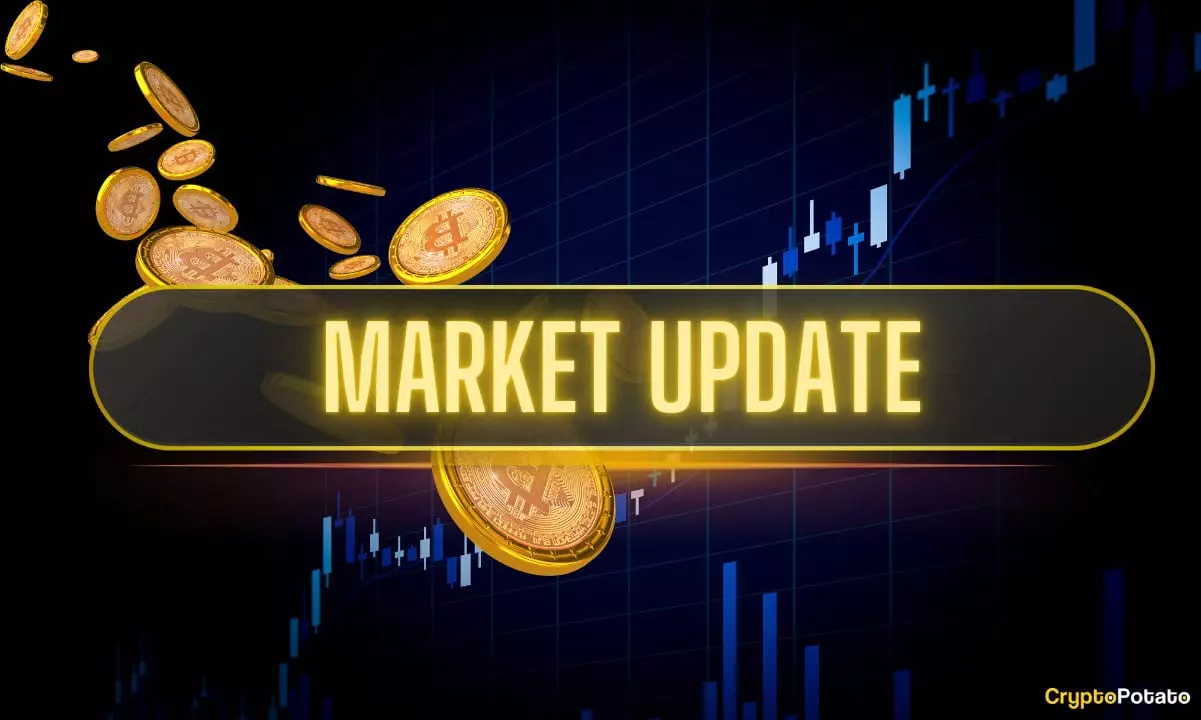In a world increasingly fraught with geopolitical tensions, it seems paradoxical that the cryptocurrency market could exhibit any semblance of stability. Yet, amidst missiles and military threats, Bitcoin has shown a remarkable resilience, bouncing back from prices that nosedived following significant international conflicts. Just last week, the unexpected missile attack by Israel on Iranian targets left over 70 dead and sent shockwaves through global markets—prompting an immediate drop in Bitcoin’s value from $108,000 to below $103,000. What should be troubling for investors is not merely the volatility of cryptocurrency prices but how these events are shaping the landscape in which the digital asset operates.
Despite the initial turmoil stirred by international aggression, Bitcoin managed to recover slightly, fluctuating around $104,000 to $105,000. However, even a semblance of stability can be deceptive. Investors must ask whether this resilience is truly an indication of strength or if it reflects an underlying fragility embedded within the trading ecosystem, supported primarily by institutional investors rather than the wider retail market.
Market Reactions: Institutional Influence vs. Retail Withdrawal
One undeniable trend that has emerged in recent weeks is the increasing dominance of institutional investors over retail ones in the cryptocurrency market. As prices soared beyond the psychological barrier of $100,000, it appeared evident that large-cap investors were driving this rally. On-chain data illustrates that smaller retail transactions have dwindled, implying that the lifeblood of market growth—enthusiastic retail participation—has notably diminished. This begs the question: Are we observing a transformation of the cryptocurrency market from a democratized space into one dominated by elite players?
This shift raises considerable concerns, particularly when one considers the implications of concentrated power. Institutional ownership could potentially lead to price manipulation and market instability. If a small number of players control a significant portion of Bitcoin’s supply, we might be facing a precarious future where the overall market is at the mercy of their trading moves.
Geopolitical Forces: Cryptocurrency as Safeguard or Weapon?
The intersection of geopolitics and cryptocurrency cannot be overlooked. The recent aggression between Israel and Iran has shown how quickly these external forces can send ripples through the financial world, affecting prices and investor sentiment alike. Additionally, President Trump’s call for renewed negotiations regarding Iran’s nuclear program only adds layers of complexity for both traditional and digital currencies. In this chaos, one must wonder if cryptocurrencies have become a refuge from nationalistic policies or if they could potentially be leveraged as instruments of economic warfare.
Furthermore, the recent actions concerning major legislation, such as the GENIUS Act aimed at stablecoin oversight, demonstrate how state actors are beginning to grapple with the reality of a currency system that largely operates outside of their direct control. As governments respond to market innovations, they start to realize the implications of a parallel financial system. The result of this tension could either be a more regulated environment that fosters stability or an oppressive one that hinders innovation altogether.
Bitcoin Supply Dynamics: A Looming Crisis?
A further pressing issue has become apparent through recent market analyses: the dwindling supply of Bitcoin. Current reports suggest that a significant number of Bitcoins are being relegated to a long-term ‘ancient supply’ while new issuance rates lag behind demand, indicating that the available supply could dry up significantly. This reduction may lead to increased scarcity, driving speculative pricing and potentially squeezing smaller investors out of the market altogether.
But what does this mean for the average investor? With Bitcoin prices projected to rise amidst tightening supply, it creates both opportunities and risks. The allure of high returns could render Bitcoin investment an attractive yet volatile proposition, as less-informed investors chase gains without adequate risk awareness.
The Future Landscape: A Call for Cautious Optimism
Looking ahead, we are at a crossroads where technology, finances, and geopolitics intertwine in increasingly complex ways. As cryptocurrency continues to establish itself as a formidable asset class, it remains vital for investors to maintain a keen awareness of global tensions, institutional dynamics, and supply fundamentals driving the market.
While cautious optimism can support informed investment strategies, the prevailing political atmosphere indicates that external factors may pose risks that the average investor cannot ignore. Adapting to these conditions and understanding their implications will be crucial—not just for survival in this volatile market, but for thriving amid chaos.


Leave a Reply